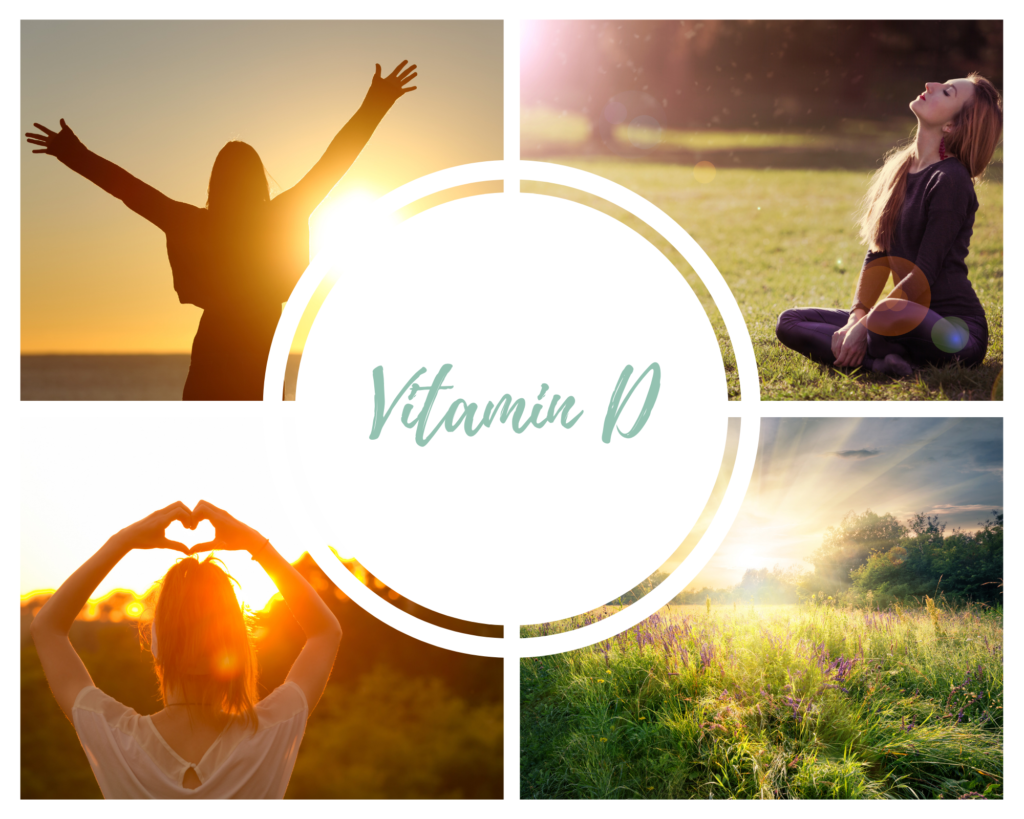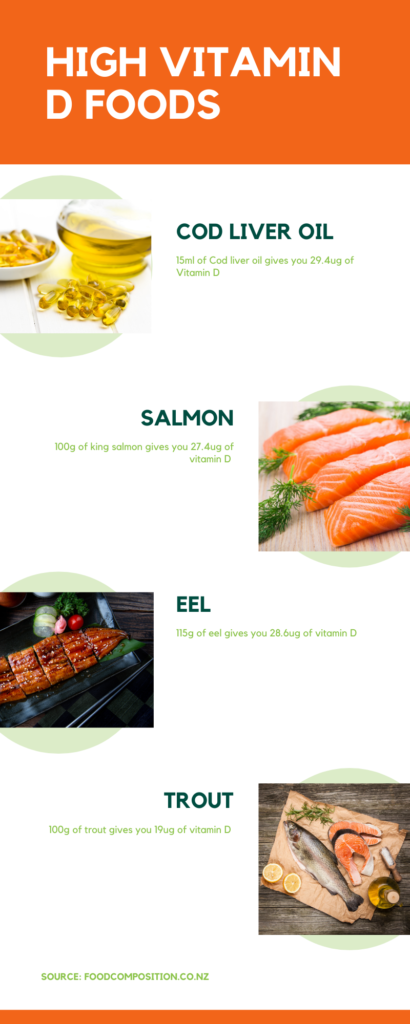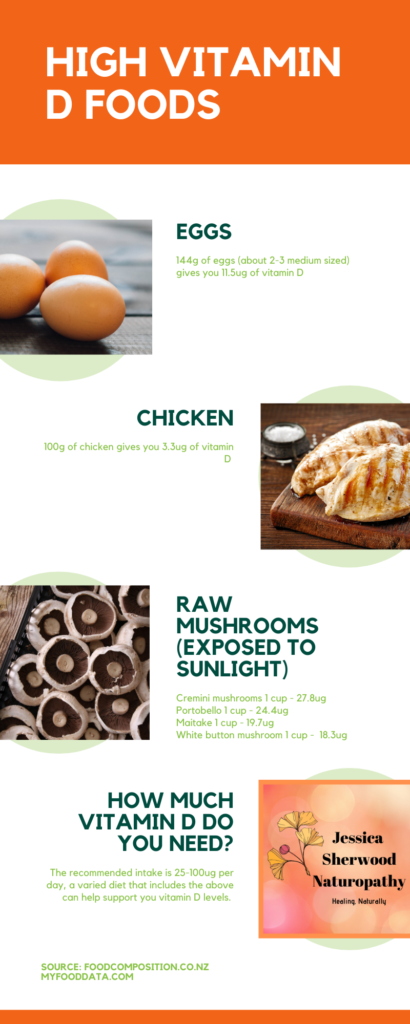Vitamin D
Vitamin D is something we should be aware of, especially in New Zealand! Did you know that because of where New Zealand is situated in the world that the level of vitamin D we receive is way below what is needed for optimal health!
Vitamin D deficiency is regarded as a mean serum 25(OH)D levels below 25nmol/L for adults with vitamin D insufficiency regarded as below 50nmol/L. Based on a systematic review in 2012 (basically an analysis of research papers) showed that New Zealand had significantly low vitamin D levels. between 25-49nmol/L for children and adolescents (18 and under) and below 25nmol/L for adults.

Why do you need vitamin D?
Vitamin D is necessary for bone and muscle growth, immune health, and development. The skin has a precursor to vitamin D so that when the UVB or ultraviolet B sunrays attach to it, converts it to vitamin D as we know it in the liver and kidneys.
Vitamin D is essential for calcium absorption, without enough vitamin D you can not absorb enough calcium from your diet and your body takes it from your bones, which may lead to osteoporosis (a form of softening of the bones).
Vitamin D is needed for balancing phosphorus levels in the blood – which is also needed for bone development.
Vitamin D is also found in many other tissues and has been associated with autoimmune conditions and infection – that immune health link I spoke about earlier. Its also associated with mental health problems and cardiovascular disease.
What is deficiency?
Deficiency has been associated with many conditions, a severe deficiency (<17.5 nmol/L) is linked with osteomalacia and rickets while deficiency (<25nmol/L) is associated (those with low vitamin D may have this disease, but not all people with the disease will have low vitamin D) with hyperparathyroidism, cardiovascular disease, cancer, diabetes, autoimmune conditions such as multiple sclerosis.
How much do you need?
The recommended daily intake via food is 25-100 micrograms or 800UI (international units) per day.
The upper limit (how much you can take before experiencing side effects) is 4000IU/d for adults and 2000 IU/day for children (1-10 years). However, everyone is different and the side effects of too much vitamin D can happen at lower doses. Signs of toxicity include headaches, gastrointestinal disturbances, kidney stones, kidney failure, and growth restriction.
Where do you get vitamin D from?
Mainly from sunlight, but due to the harsh NZ sun most people cover up, use sunscreen (every day), or avoid the sun and use self-tanning creams to get that summer glow.
There are no studies that determine a “safe” level of sun exposure – e.g. we don’t know how much sun exposure leads to skin cancer, and therefore personal judgment must be used at all times.
In optimal conditions, 10-15 minutes in the direct sun (less than the time it takes to redden or burn the skin) 3-5 times a week can be enough to produce the required vitamin D. What are optimal conditions? Well, that remains debatable but research papers have suggested the time of day, season (summer over winter), weather (sunny over cloudy), age, skin colour and sunscreen use can all be linked to increased vitamin D production.
It is recommended to go outside for 6-9 minutes in summer (at 10 am or 2 pm) or 24 minutes in Auckland or 40 minutes in Christchurch at midday in winter (BPAC, 2011).
You can get it from food sources, like oily fish, cod liver oil, and mushrooms but if you are already deficient this may not be enough for optimal health. Vitamin D is a fat-soluble vitamin, you need to be able to absorb fat to absorb this vitamin. Conditions that cause inflammation in the gut can hinder fat absorption. Also, as vitamin D is converted in the liver and kidneys, those with liver and kidney problems may not be converting the vitamin, even if they manage to eat enough through their diet.


Can I just take a pill?
While supplementation may be recommended if you are:
- pregnant
- live in the south island
- have naturally dark skin
- practice complete sun avoidance
- take medications that interfere with vitamin D levels
- breastfed infants over winter
- have liver or kidney disease
- have a form of gastrointestinal disease
Consuming an adequate amount from the diet and safe sun exposure should be enough to maintain adequate levels of vitamin D.
However, your naturopath or GP should be able to determine your risk for low vitamin D and make a personalised plan to increase your vitamin D levels.
Click HERE to book your consultation today!
Medical Disclaimer. The information on this site is not intended or implied to be a substitute for professional medical advice, diagnosis, or treatment. All content, including text, graphics, images, and information, contained on or available through this web site is for general information purposes only.


1 thought on “Vitamin D”
Foods To Support Sleep – Jessica Sherwood Naturopath May 27, 2021 at 2:26 pm
[…] better sleep, as well as an improved daytime functioning. This is through providing your body with vitamin D and Omega 3 fatty acids, which are also involved in the body’s regulation of serotonin. This […]
Reply